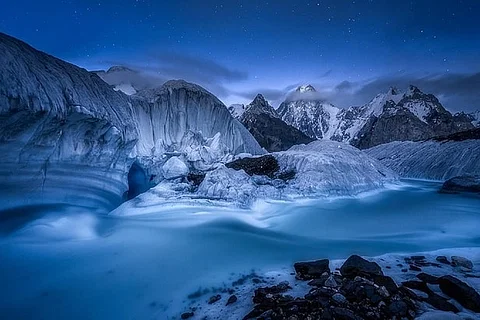‘Wake-up call’ : Low Himalayas snowfall threatens water security, warns study
A recent study has warned that the Himalayan snowmelt, which provides about a quarter of the water for 12 major river basins in the region, is at risk due to unusually low snowfall in 2024, AFP reported.
“This is a wake-up call for researchers, policymakers, and downstream communities,” said Sher Muhammad from the International Centre for Integrated Mountain Development (ICIMOD). “Lower snow accumulation poses a serious risk of water shortages, particularly this year.”
As well as Nepal, the inter-governmental ICIMOD organisation includes member countries Afghanistan, Bangladesh, Bhutan, China, India, Myanmar and Pakistan.
The Himalayas supply water to around 240 million people in the mountains and 1.65 billion people in river valleys below. Climate change is causing erratic rainfall and weather patterns, affecting snow levels.
This year, “snow persistence” dropped nearly a fifth below normal across the Hindu Kush and Himalaya region. The Ganges basin saw the lowest snow persistence at 17 percent below average. ICIMOD has been monitoring snow for over two decades, noting 2024 as a significant anomaly. Authorities are urged to address potential droughts proactively.
The report indicates significant changes in the timing and intensity of stream flows, with snow playing a crucial role in seasonal water availability. Snow persistence levels this year are the second-lowest in 22 years, narrowly trailing the record low of 19% in 2018.
The Helmand river basin in Afghanistan recorded its second-lowest snow persistence at 32% below normal. The Indus river basin was down 23% below normal, while the Brahmaputra river basin, ending in Bangladesh, had snow persistence “notably below normal” at 15%.
Miriam Jackson, a senior cryosphere specialist at ICIMOD, urged authorities to “take proactive measures to address possible drought situations.”

